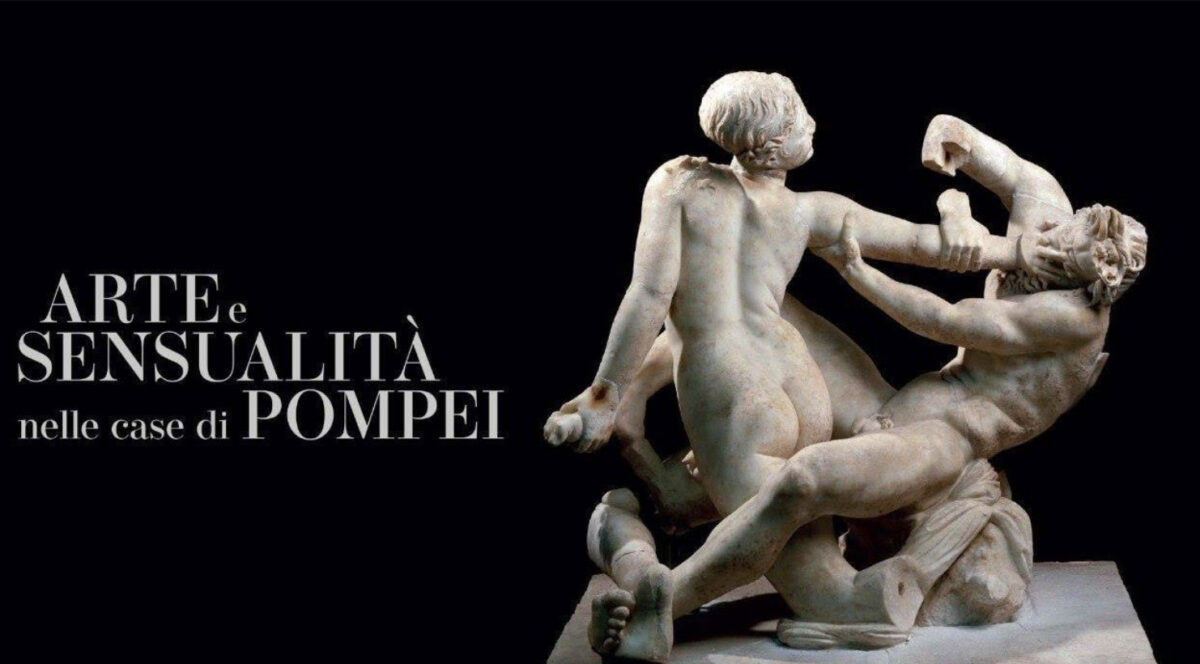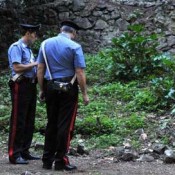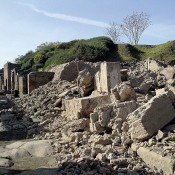Amazement, curiosity and embarrassment are among the emotions experienced by archaeologists and visitors when confronted by paintings and sculptures of Pompeii and the other Vesuvian sites, ever since the first discoveries in the 18th century. As the excavations progressed, it became increasingly apparent that images of a sensual and erotic nature, often far from a classicist vision of the ancient world, characterised practically all areas of the city, from private houses to bath complexes, from inns to seedy taverns and public spaces. More recent discoveries which have aroused great interest include the House of Leda and the Swan, and the ceremonial chariot with erotic decorations from Civita
Giuliana.
With a widely diverse audience originating from all over the world, which in recent months has been returning to Pompeii, the question of how to explain the extent of sensuality in the imagery of Pompeii is more apposite than ever.
The exhibition entitled ‘Art and sensuality in the houses of Pompeii’, which opened on the 21st April 2022 and will run through the 15th January 2023, in the Large Palaestra of the archaeological site, aims to illustrate and recount the extent and significance of sensual and erotic subjects in the domus and in the daily life of the ancient Pompeians.
Among the 70 works on display, all from the storerooms of the Archaeological Park of Pompeii, the visitor will also find recent discoveries, such as the two bronze medallions with erotic scenes from the Civita Giuliana ceremonial chariot; the elegant ceiling of the cubiculum (bedroom) from the House of Leda and the Swan, which was found collapsed on the floor, before being reassembled and restored; and the three walls from the cubiculum of the Villa of Gragnano in the Carmiano area, which has been reconstructed following a recent restoration.
The exhibition thereby highlights the recent discoveries in the context of of the Great Pompeii Project and the new investigations conducted under the direction of Massimo Osanna, now Director General of Museums and author, along with Luana Toniolo, of the essay ‘The hidden world of Pompeii: the wedding chariot, the room of the slaves and recent discoveries’, published by Rizzoli.
In addition, ‘The Centaurs of Pompeii’, a children’s guide written by the Director and illustrated by Daniela Pergreffi, seeks to explain a ‘difficult’ subject to younger visitors, by following the footsteps of the centaur Mares in his search for a centauress. As well as enjoying the exhibition, by following the story, younger and older readers will encounter a series of figures central to ancient mythology, from Narcissus to Dionysus and Ariadne.
“In these times of pandemic emergency and war, this exhibition seeks to be an ode to the resilience of beauty – declares Director of the Archaeological Park of Pompeii, Gabriel Zuchtriegel – but from a historical perspective, which helps us to understand that even in the past, art and the imagination were interwoven with social, cultural and political relationships and hierarchies. That we today may admire in Pompeii an ancient city with frescoes, statues and furnishings in the very positions in which they were buried by the eruption of AD 79, is a wondrous gift of history that we must preserve and pass on to future generations. The exhibition, which serves as a kind of introduction to the site visit, seeks to contribute to this, also highlighting many works previously in storage which in some cases have been
restored and subjected to new studies prior to being displayed to the public.”
“This exhibition belongs to the category of research exhibitions, aimed at valorising both the cultural asset and the site but also the multiple relationships, the collaboration between differing research methodologies and the responsibilities of protection and management” – adds Maria Luisa Catoni – “It allows the visitor to establish a physical relationship between what is on display and other objects and locations in the site, including several new discoveries only recently brought to light. The visitor thus enters an exhibition in which he can see not only objects of great interest and beauty but also use them as ‘pointers’ to different contexts: the context of Pompeii and the archaeological site, the context of the Villas, for example those of Stabiae and Oplontis, the context of the Greco-Roman cultural exchange over the course of the 1st century AD, the context of the codification and tradition of erotic and sensual images, and the context of the functions and uses of such images in the areas they decorated and so on. In few other places in the world is it possible to offer a visitor such a complex and interactive journey. At Pompeii this is made possible as a result of the extraordinary commitment made by the site over several years to the fields of research and the communication of research, as well as by the opening of the site to researchers from all over the world”.
The exhibition area, which occupies the western portico of the Large Palaestra, will lead the visitor through an ideal Pompeian house, with scans of its various rooms, in which the works are displayed: the atrium, the cubiculum (bedroom), the triclinium (dining room) and the peristyle (internal colonnaded garden).
The exhibition will be completed with an itinerary to discover various buildings on the site which are characterised by frescoes and references to the theme, with the support of an app, while a guide for children will assist youngsters to visit the exhibition and learn about a series of figures central to ancient mythology.
The curators of the exhibition are Gabriel Zuchtriegel, Director of the Archaeological Park of Pompeii, and Maria Luisa Catoni, Professor of History and Archaeology of Ancient Art at the IMT School for Advanced Studies, Lucca.





